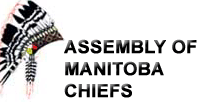Background
The AJI-CWI was organized into a five-phase plan. Below is a summary of progress that has brought the AJI-CWI to Phase 4.
Completion of Phases 1 and 2 – Conceptual Plan
After a tremendous amount of work, the AJI-CWI Implementation Committee presented the Conceptual Plan of the AJI-CWI to the Joint Management Committee (JMC) on July 3, 2001. The JMC subsequently endorsed the plan for submission to the Executive Committee for review and approval. On July 11, 2001, the Executive Committee officially gave its support to proceed with the public feedback process and the development of a more detailed implementation plan based on the Conceptual Plan.
Completion of Phase 3 – Public Feedback and The Detailed Implementation Plan (DIP)
Phase 3 began August 9, 2001, with the official public release of a 34-page booklet, based on the Conceptual Plan, called Promise of Hope: Commitment to Change
A feedback process was conducted to give Manitobans the opportunity to respond to the vision described in Promise of Hope. Twelve Town Hall Meetings took place in both Aboriginal and non-Aboriginal communities across Manitoba. In addition to the Town Hall Meetings, interested groups and individuals were encouraged to send written feedback by September 30, 2001. An online feedback page was also available on this website.
Focus groups were also held in various communities across the province to secure additional feedback. These sessions included youth in care, adults who have been in care, birth family members of children in care, foster parents and women's organizations.
A summary report of the public’s response was written and published in January 2002. It reported that:
- "Strong and widespread support was expressed for the overall vision for a restructured child and family services system as described in Promise of Hope: Commitment to Change. Almost all participants felt the proposed changes would contribute to a more responsive child and family services system and were long overdue.”
Manitobans also expressed a number of concerns about the process for implementing the AJI-CWI, which the AJI-CWI partners have taken into consideration in developing the Detailed Implementation Plan or DIP.
Along with the public feedback process, the writing of the DIP was the main activity of Phase 3. The DIP describes the numerous steps necessary to complete the process of implementing the new system.
Transition into Phase 4
The support by the AJI-CWI Executive Committee for the DIP as a “rolling document” (which means it will be amended from time to time to reflect changing circumstances based on the consensus of the four partners to the AJI-CWI) marks the transition into Phase 4.
Work in Phase 4 focused on the 20 sub-projects of the DIP. It had been expected that the plan would be substantially implemented by March 2005.
AJI-CWI Updated Time Lines
- Phase 1 – September 2000 to December 2000
Proposals and recommendations for an initial draft plan
- Phase 2 – January 2001 to July 2001
Completion of the AJI-CWI Conceptual Plan
- Phase 3 – August 2001 to April 2003
Completion of the public feedback process, development of the Detailed Implementation Plan (DIP), and transition into Phase 4
- Phase 4 – February 2003 to October 2005
Plan substantially implemented
- Phase 5 – November 2005 to November 2005
Stabilization of changes implemented









